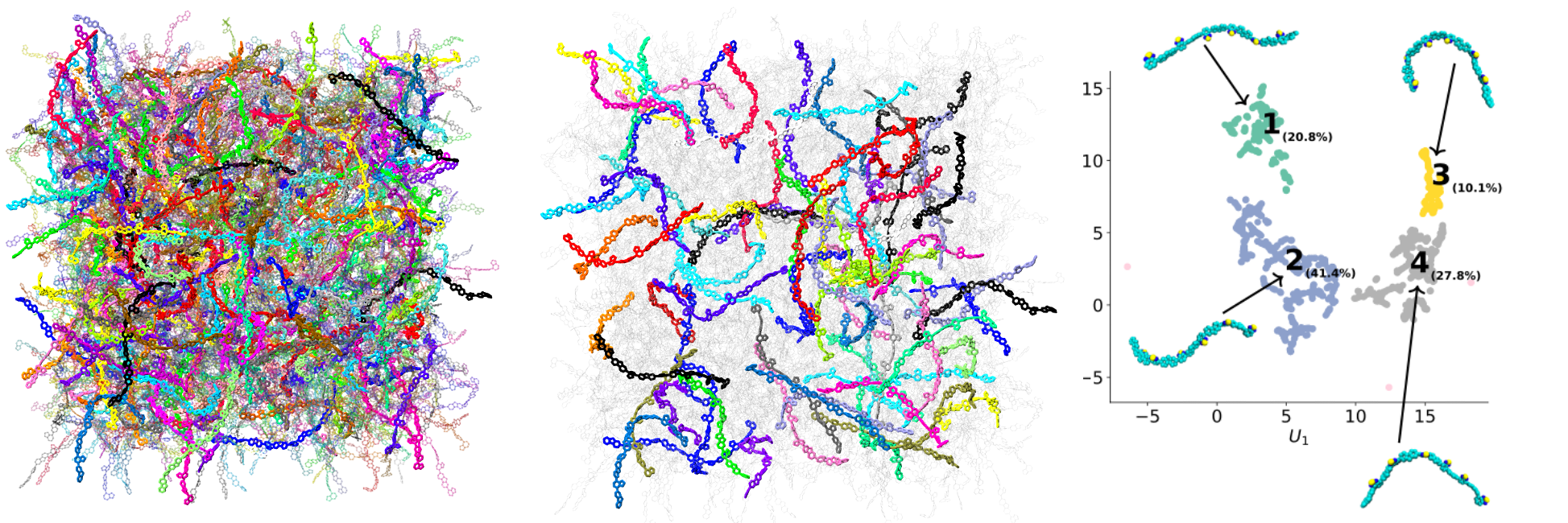In this manuscript, we provide new fundamental insights into the nanoscale structure of an archetypal donor-acceptor conjugated polymer, poly(9,9-di-n-octylfluorene-alt-benzothiadiazole (F8BT). F8BT is a widely-studied conjugated polymer, which is used in a variety of different application areas due to its bright fluorescence and biocompatibility, usually in the form of conjugated polymer nanoparticles (CPNs). Studying the underlying structure of these CPNs is inherently challenging experimentally, since the high-energy methods typically used to study semiconductor quantum dots are not suitable to study organic materials. Furthermore, the study of F8BT by computer simulations has been hindered by the lack of suitable force field parameterisation schemes. To date no atomistic simulations have been reported for amorphous F8BT and as such, understanding of its nanoscale structure is lacking. In this work, we develop a bespoke classical force field for F8BT from density functional theory and use it to study F8BT in its amorphous state. By integrating classical molecular dynamics simulations with state-of-the-art machine learning and mathematical modelling techniques, we show that a percolating network exists within amorphous F8BT and that individual molecules adopt specific conformations within the seemingly disordered amorphous state.
The key importance of this work is that it:
- Provides new fundamental insights into the network-level structure of an amorphous conjugated polymer. A network-level analysis of ring stacking in the simulations shows that a giant percolating cluster is formed in amorphous F8BT, in quantitative agreement with our mathematical model. This highlights that an amount of ring stacking greater than that driving percolation in our simulations is required to induce the bathochromic shift and quantum yield reduction seen experimentally in annealed, highly ordered conjugated polymers.
- Shows there are distinct structural states in the seemingly amorphous conjugated polymer. We show that distinct conformations exist within amorphous F8BT, ranging from contracted to extended. The most contracted conformations have hindered ring stacking propensity as compared to the more extended conformations. While both molecular conformation and ring stacking have long been known to affect the all-important optical properties of conjugated polymers, the effect of conformation upon ring stacking is as-of-yet unreported.
By integrating molecular scale simulations with machine learning techniques, we provide an important, generalisable understanding of the nanoscale structure of industrially relevant F8BT, which in turn provides rational design principles by which to develop new conjugated polymers with improved optical properties.
Full reference: Conformational heterogeneity and interchain percolation revealed in an amorphous conjugated polymer, Robert M. Ziolek, Alejandro Santana-Bonilla, Raquel Lopez-Rios De Castro, Reimer Kuehn, Mark Green & Christian D. Lorenz, ACS Nano (2022) 16 (9), 14432-14442.

